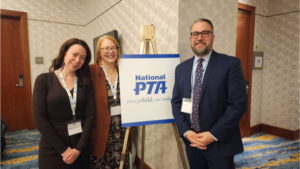The story
By now you may have read the headlines such as “YouTuber Myka Stauffer Reveals Adoption Dissolution 2 Years After Welcoming Son Home from China.” You may have even viewed the original adoptive parents’ tearful YouTube video about the “rehoming” of their son, Huxley.
This video and the story it tells create big feelings in most viewers. This family adopted a 2 ½ -year old boy from China over 2 years ago. The mother, Myka Stauffer, shared the journey, along with about everything else about her family, through YouTube videos. Stauffer’s YouTube channel has over 700, 000 subscribers and serves as a source of income for her family.
No one will be surprised that a firestorm erupted last week when, after several months of no mention of this son, the Stauffers announced that they had worked with professionals to find another family for the boy.
The immediate question is “What happened?” followed quickly by “who’s to blame?” For those of us who have walked similar journeys, we recognize that these questions have no easy, clear-cut answers.
The Stauffers aren’t the only ones
My family’s situation has much in common with the Stauffers’, although I had never heard of them until just a few days ago. We too adopted our daughter from China, at the age of 19 months. The reports contained no emotional or neurological red flags. Yet we could soon see that she struggled with something that our three older children had not. Over the course of the next decade we worked hard to unravel the complexities and get accurate answers. The best we can conclude from the countless evaluations and tests is that our daughter’s diagnoses of both autism and developmental trauma disorder are the most accurate. Some professionals believe these two can’t co-exist. But then again, they haven’t met our daughter.
The challenges
The Stauffer family got a diagnosis of autism early and began ABA therapy. According to Myka’s frequent reports, the intensive therapy was leading to improvements. But then, something–probably many things–happened. Huxley appeared less frequently in her videos. And, as they shared last week, the challenges they showed on video were just the surface of what was really going on.
Then the judgments began:
- The Stauffers shouldn’t have put the child in their videos.
- The family should not have fundraised for an adoption if they weren’t committed.
- They shouldn’t have said he was doing well if he wasn’t.
- Rehoming shouldn’t have been an option.
- They shouldn’t have… (fill in the blank).
This family, like so many other families who have adopted children (internationally or otherwise), struggled with layers of complexity that they had not prepared for. Some of these things could have been made easier through anticipation of the challenges and training and support to meet them.
Some examples:
- The Stauffers found out about their son’s developmental problems after accepting the adoption match and even then, did not have the full picture concerning his needs.
- Myka’s pre-adoption videos indicate that she understood that their new son would struggle with acclimating to them. However it does not seem that they had full understanding of the impact of his earlier adversities and the developmental complexities that chronic trauma could bring.
- Likewise, little evidence exists of a deep understanding of attachment challenges or the fact that attachment develops slowly, on a continuum.
- The family had several children of similar ages, with some younger than Huxley. Although people often do so, adopting out of birth order creates a risk, especially when one child has so many special needs. Traumatized children who struggle to attach need lots of parental attention to meet their emotional needs. Keeping everyone safe also becomes a bigger challenge when such small children are involved.
Beyond judgment and blame
We may never know exactly what precipitated the decision to rehome Huxley. Right now, the Stauffer family is taking a public beating. “Giving up” on one’s child by placing them in another family is beyond what most people can imagine. Prior to my immersion in the world of trauma and attachment disorders, I probably would have followed public opinion on this one. Now that my husband and I have had these excruciating conversations ourselves, however, I can’t cast any stones. The new family may be exactly what Huxley needs. As long as wise social workers and other professionals are involved, we can hope for the best.
What if, instead of demonizing these parents, we recognized that some children, especially those affected by significant trauma or attachment challenges (with or without other neurological complexities like autism of fetal alcohol syndrome) may need more than a typical family can give. What can we do differently to support a families from the start?
ATN’s mission and message
That’s where the mission of ATN comes in – to support the healing of children in their families, schools and communities. When I read about the Stauffers, I felt profound sadness. A journey that started out so hopeful and transparent ended in rehoming, which led to shame and vilification. Poor Huxley has one more broken attachment in his young life. Most observers and commentators can’t fathom trauma so deep that typical parental love may not be enough. We need to help the public understand.
We’ve long known that children adopted from orphanages or foster care have been subjected to toxic stress, trauma, and loss. Some even develop PTSD. Chronic and severe trauma actually change the way a child’s brain develops. Yet children can experience significant healing and build resilience if they have at least one stable, committed parent who has a network of people to help provide support, therapy, coaching, and respite. Most families still do NOT receive these services. Many do NOT receive the information and training they need pre- and post-adoption.
The impact of trauma and attachment challenges on children is immense, but at ATN, we know that with the right support, healing CAN happen. We have to help prepare adoptive, foster, and kinship families. We must make supports, therapies, and respite abundantly available for families who need these services wrapped around them.



